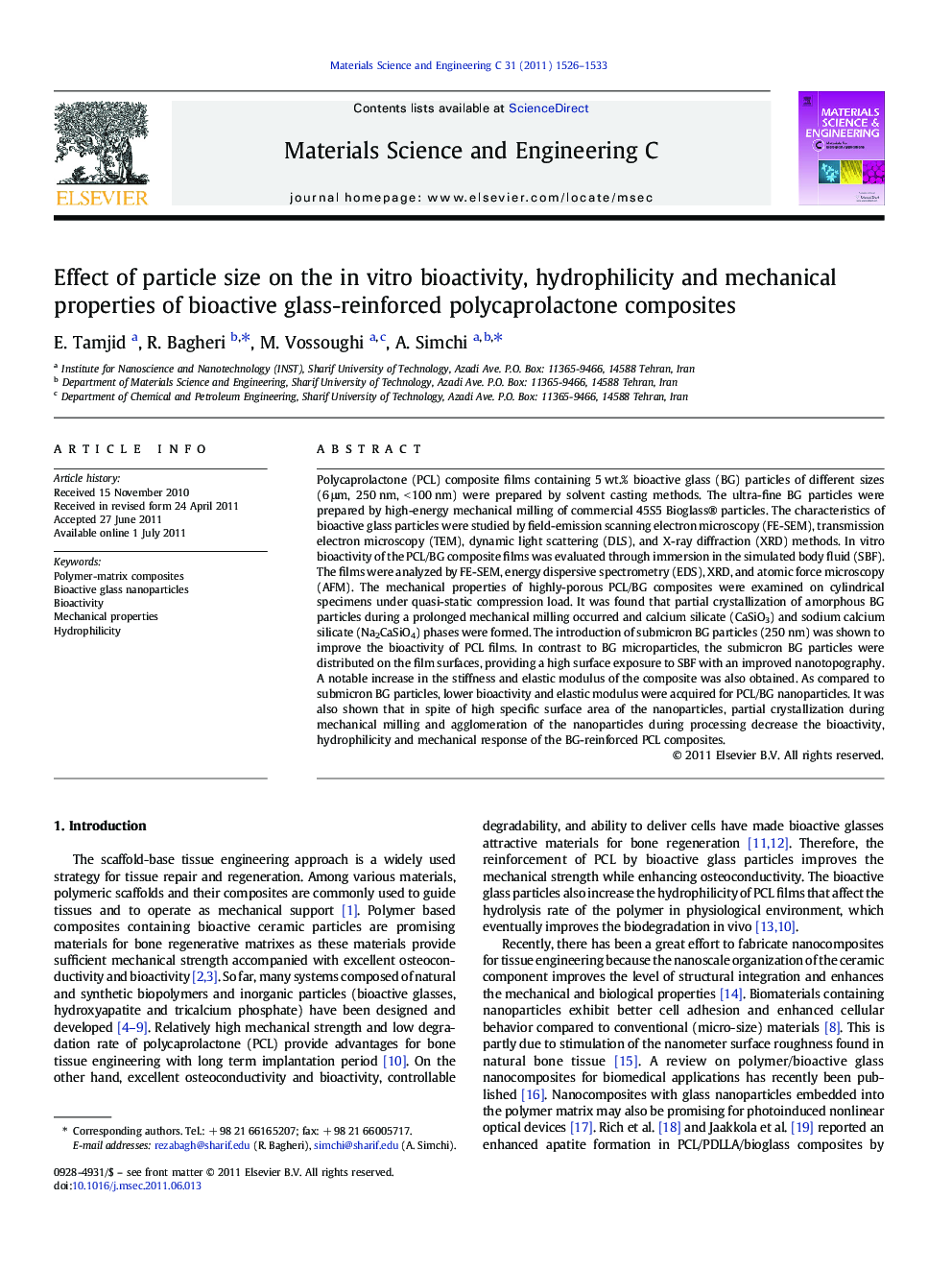| کد مقاله | کد نشریه | سال انتشار | مقاله انگلیسی | نسخه تمام متن |
|---|---|---|---|---|
| 1429743 | 987180 | 2011 | 8 صفحه PDF | دانلود رایگان |

Polycaprolactone (PCL) composite films containing 5 wt.% bioactive glass (BG) particles of different sizes (6 μm, 250 nm, < 100 nm) were prepared by solvent casting methods. The ultra-fine BG particles were prepared by high-energy mechanical milling of commercial 45S5 Bioglass® particles. The characteristics of bioactive glass particles were studied by field-emission scanning electron microscopy (FE-SEM), transmission electron microscopy (TEM), dynamic light scattering (DLS), and X-ray diffraction (XRD) methods. In vitro bioactivity of the PCL/BG composite films was evaluated through immersion in the simulated body fluid (SBF). The films were analyzed by FE-SEM, energy dispersive spectrometry (EDS), XRD, and atomic force microscopy (AFM). The mechanical properties of highly-porous PCL/BG composites were examined on cylindrical specimens under quasi-static compression load. It was found that partial crystallization of amorphous BG particles during a prolonged mechanical milling occurred and calcium silicate (CaSiO3) and sodium calcium silicate (Na2CaSiO4) phases were formed. The introduction of submicron BG particles (250 nm) was shown to improve the bioactivity of PCL films. In contrast to BG microparticles, the submicron BG particles were distributed on the film surfaces, providing a high surface exposure to SBF with an improved nanotopography. A notable increase in the stiffness and elastic modulus of the composite was also obtained. As compared to submicron BG particles, lower bioactivity and elastic modulus were acquired for PCL/BG nanoparticles. It was also shown that in spite of high specific surface area of the nanoparticles, partial crystallization during mechanical milling and agglomeration of the nanoparticles during processing decrease the bioactivity, hydrophilicity and mechanical response of the BG-reinforced PCL composites.
► The effect of Bioglass particle size on the in vitro bioactivity of polycaprolactone/Bioglass composites was studied.
► Partial crystallization of bioactive glass particles during high-energy mechanical milling was shown.
► The submicron BG particles (250 nm) were shown to improve the bioactivity of PCL films.
► Lower bioactivity was acquired for the nanocomposite due to agglomeration and partial crystallization.
► The hydrophilicity and elastic modulus of the composites were shown to depend on the size of Bioglass particles.
Journal: Materials Science and Engineering: C - Volume 31, Issue 7, 10 October 2011, Pages 1526–1533